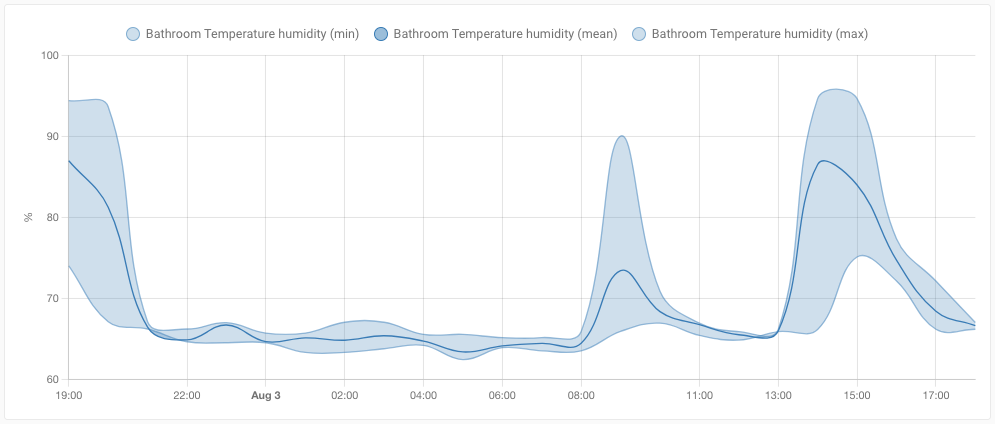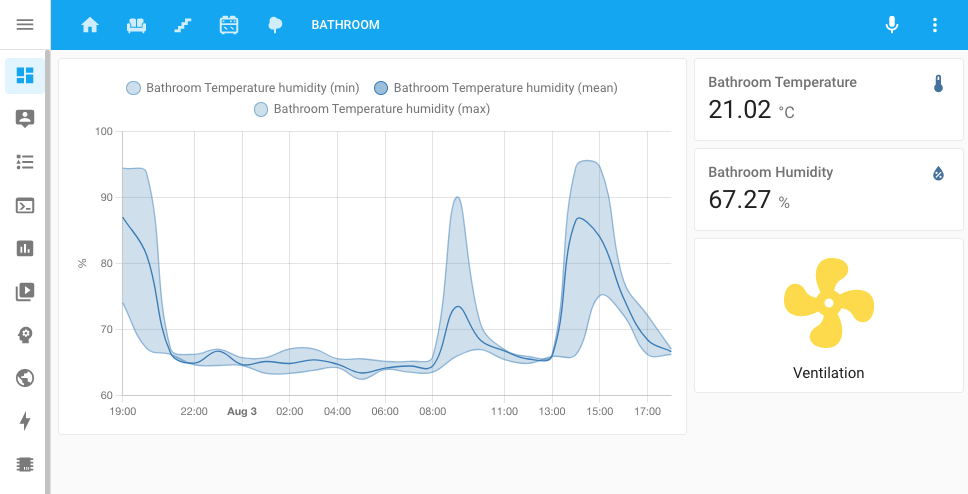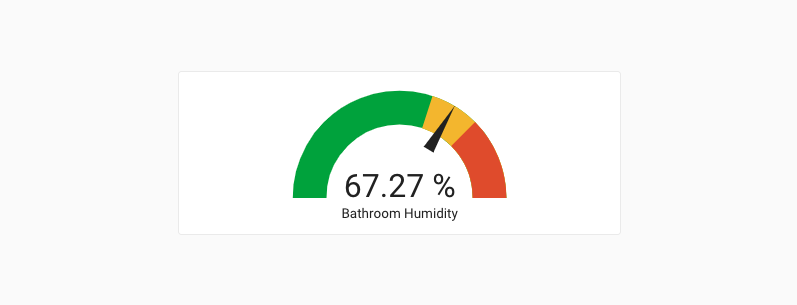Happy August! ☀️
Home Assistant Core 2021.8 is here, and this is the release I have been looking forward to for months! There is so much exciting new stuff in here: I don’t know where to start.
The most exciting part is the new main focus that is added to Home Assistant:
Home Energy management.
A massive deal for a lot of people, no matter if you are doing it for environmental reasons or simply to save a buck or two (or both 😬). Knowing that moving forward, it will be an additional focus, I think, is amazing.
But besides the Energy management stuff, I’m also excited about the side effects of it. A lot of things created for Energy, are also re-usable for other things! That is how we roll, right?
We get long-term statistics, new super nice and fast graphs, and a new layout option for Lovelace. All the building blocks are available for customization and re-use. I am looking forward to seeing how they are going to be put to use.
Anyways, enjoy the release! And don’t forget the drop by the release party on YouTube later today (9:00 PM CET).
../Frenck
Matthias de Baat joins Nabu Casa
Let start by announcing that Matthias de Baat is joining the team at Nabu Casa to work on Home Assistant as a UX-designer.
UX stands for “User Experience”, which is Matthias’ area of expertise and what he will be working on improving. His goal is to make Home Assistant easier to use and accessible for everyone. He will be setting up design processes and tooling, doing user research and making designs.
If you are interested in joining the Home Assistant user research group, you can show your interest by filling in this Google Form that Matthias has prepared.
Welcome Matthias! Excited to have you on board!
But wait! There is more!
Otto Winter, the founder of ESPHome, will be joining Nabu Casa during his summer break as well! Welcome Otto! This summer is going to be fantastic!
Home Energy Management!
This feature is a big thing; A start of something new. Home Assistant is going to provide you insight into your energy usage.
But this needs more than just a paragraph in the release notes, this needs its own blog! So, at this point, stop reading the release notes (momentarily) and read the blog Paulus has written about this:
Read the blog about the new Home Energy Management features of Home Assistant
Long term statistics
Storing sensor data for a more extended period using the recorder, can make your database grow pretty fast (especially if you have sensors that update a lot!).
In the previous releases, we’ve worked towards improving this situation and laid down the groundwork for tracking statistics in the database; We are making it widely available this release!
Integrations can now hint Home Assistant about the type of value the sensor represents, allowing us to process and store that data in a more efficient way. Every hour, we calculate things like mean, min/max values, or the difference created that hour and store just that result in our long-term statistics.
These statistics is what partly powers the new Energy dashboard, however, they can be used for anything else: Introducing the Lovelace statistics graph card.
Screenshot of the new Lovelace statistics graph card.
This card can make beautiful graphs, allowing you to make graphs for any of
your stored long-term statistical data. It can render as a line or bar chart.
Bars are suited for metered entities that have a summed value. Lines are
perfect to display the mean, min and max of the entity.
The support for long-term statistics is limited at this moment. We are expecting to open it up for more measurements in the upcoming releases while more integrations are adding support for these new measurement types.
Sidebar view
The default layout you see in Lovelace (which we generally all use), is called the “masonry” layout. We also have a panel view/layout that stretches a single card to the whole view. This release brings in a brand new view layout: Sidebar.
This new sidebar view has two columns, a wide one and a small one on the right. It is perfect for displaying larger cards like graphs (like that nice new statistics graph card), or maps. While having some additional smaller cards with information on the side.
The new Energy dashboard uses this new view layout, but of course, made available for use in other Lovelace dashboards as well.
Screenshot of new Lovelace sidebar view layout.
Gauge card now has needle mode
A nice little addition to the Lovelace gauge card: Needle mode!
Instead of showing a value and filling it partially, in needle mode, it will show the full gauge but point out the value with a needle. And, if you add severity to your gauge card configuration, it will always be shown.
Screenshot of the Gauge card in needle mode with severity configured.
These settings are available straight from the Lovelace UI editor; More information and examples can be found in the Gauge card documentation.
Currency core setting
To support the display of financial values, we’ve added a new setting to Home Assistant that allows you to define the currency Home Assistant should use in cases it relies on your input.
You can find this new currency setting in the general settings of Home Assistant.

This setting is used for the cost calculation of the new energy features.
Siren
The last release, we introduced the select entity,
this release, we introduce the siren entity! 🚨
Thanks to @raman325 for adding this noisemaker to the family! He also implemented the first integration to add support for Sirens: the Z-Wave JS integration. So, if you have a Z-Wave enabled Siren, you can now control it.
Locking, Unlocking and Jammed
Locks in Home Assistant can be a little bit smarter as of today, thanks to @bdraco. Besides the locked & unlocked states, support for locking, unlocking and jammed has been added.
Support for these new states has been added to the August, HomeKit Controller and template integrations. Additionally, HomeKit, Alexa and Google Assistant have been made compatible and aware for these states as well.
Scripts/Automations/Templates
Some new features landed for script, automations and templates this release.
This
When an automation or script is triggered to run, a new variable is available:
this. This variable contains the state object
of the automation or script running and allows you to access information about
the automation directly. Thanks, @r-t-s!
Device template functions
If you like to write YAML automations manually, are using templates, and require device IDs or device information, than you know those IDs are hard to find and the device information is not available at all.
@raman325 added some new template functions that can be helpful when working with devices.
-
device_entities(device_id)returns a list of entities associated with a given device ID (can also be used as a filter). -
device_attr(device_or_entity_id, attr_name)returns the value ofattr_namefor the given device ID or entity ID. -
is_device_attr(device_or_entity_id, attr_name, attr_value)returns whether the value ofattr_namefor the given device ID or entity ID matchesattr_value. -
device_id(entity_id)returns the device ID for a given entity ID (can also be used as a filter).
Thanks for these powerful new features!
Other noteworthy changes
There is much more juice in this release; here are some of the other noteworthy changes this release:
- Thanks to @firstof9, Z-Wave JS now has support for transitions with lights!
- More Z-Wave JS improvements by @raman325. He added support for device triggers and conditions. Thanks!
- You can now assign a unique ID to light, cover and media player groups, allowing you to manage them from the Home Assistant frontend and assign them to an area!
- The motionEye integration now has support for motion detection, thanks @dermotduffy
- ZHA can now work with Formaldehyde and VOC level sensors, thanks @Adminiuga
- @posixx added a new feature for integration that provide alarm panels; those integrations can now update to support Vacation mode!
- Rainbird now has a service to change the rain delay, thanks @Kr0llx!
- If you are using BMW Connected Drive, @EddyK69 added a lot of trip sensors.
- Sonos snapshots now behave, are more robust and work as expected. Additionally, support for controlling crossfade has been added, thanks @jjlawren!
- WLED now supports controlling the new playlists features introduced in WLED 0.13.
- @farmio added support for KNX lights that use HS-colors, thanks!
- And @joncar added support for transitions to LiteJet lights, awesome!
- If you have MFA on your Tesla account, thanks to @BreakingBread0, the integration now supports that.
- When using the Netatmo integration, you can now control the schedule it should be using with a select entity. Thanks, @cgtobi!
- @janiversen added more data types to modus and added array write to the turn on/off capabilities of Modbus switches, fans and lights.
- Advantage Air now has temperature sensors for each zone, thanks @Bre77!
- Gree Climate now has switches to support more modes, thanks to @cmroche!
- You can now remove holidays from the workday sensor by name instead of date. This is useful for holidays they don’t have a fixed date each year. Thanks @matthewgottlieb!
- HomeKit will not auto-recreated TVs when sources are out of sync. One thinsg less to worry about, thanks @bdraco
- @jbouwh has drastically reworked and extended the Humidifier support for the Xiaomi Miio integration. Amazing job!
This is a companion discussion topic for the original entry at https://www.home-assistant.io/blog/2021/08/04/release-20218/









